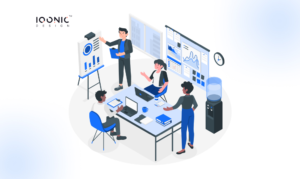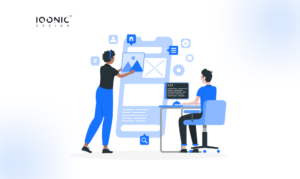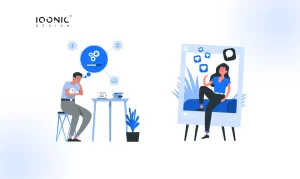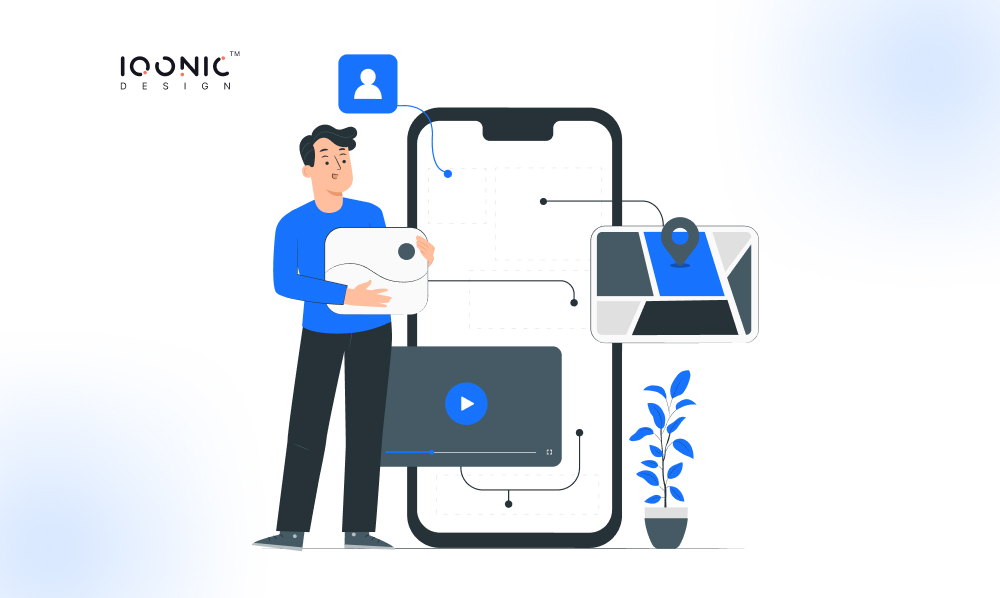
Top Tips to Boost Mobile App Development Process With Flutter
In the ever-evolving realm of mobile app development, Flutter has emerged as a shining star. This open-source UI software development kit, backed by Google, has gained widespread popularity for its ability to create natively compiled mobile, web, and desktop applications from a single codebase.
But here’s the catch: In the fast-paced app development world, efficiency and effectiveness are paramount. As developers, we constantly seek ways to streamline our processes, save time, and produce high-quality apps that resonate with users.
That’s where this blog comes in. In the following sections, we’ll explore a treasure trove of tips and strategies to supercharge your mobile app development journey with Flutter. Whether you’re a seasoned Flutter enthusiast or just starting your Flutter adventure, these valuable insights will help you optimize your development process, boost productivity, and create exceptional apps that stand out in the market.
So, let’s dive in and discover how to make the most of Flutter’s capabilities for an efficient and effective app development experience.
Tip 1: Begin with a Well-Defined Project Scope
Before diving headfirst into Flutter Mobile app development, lay a solid foundation with a well-defined project scope:
1. Set Clear Goals:
Define the app’s objectives, purpose, target audience, and expected outcomes. Having a clear vision guides your mobile app development efforts.
2. List Features and Requirements:
Create a comprehensive list of features and functionalities your app will offer. Based on their importance and feasibility, prioritize them.
3. Identify the Target Audience:
Understand your potential users’ needs, preferences, and pain points. Customize your app to meet their unique needs.
A well-defined scope prevents:
Scope Creep:
Uncontrolled additions or changes to the project scope during development.
Wasted Resources:
Resources spent on unnecessary features or functionalities.
Project Delays:
Uncertainty and confusion can lead to delays.
Starting with a clear project scope sets the stage for a more efficient Flutter app development journey, helping you stay on track and within budget.
Tip 2: Leverage Pre-Built Widgets

Flutter’s treasure trove of pre-built widgets is a developer’s dream. Here’s why you should make the most of them:
1. Abundance of Widgets:
Flutter offers an extensive library of widgets, from basic buttons to complex layouts and animations. These widgets cover nearly every UI component you can imagine.
2. Accelerated Development:
Using pre-built widgets eliminates the need to reinvent the wheel. You can assemble a polished UI quickly, saving you valuable development time.
3. Consistency in UI:
Flutter’s widgets follow the Material Design guidelines (Android) and Cupertino design (iOS), ensuring a consistent look and feel across platforms. This consistency enhances user experience and app aesthetics.
By leveraging these widgets, you can:
- Speed up mobile app development and reduce code complexity.
- Maintain a visually appealing and user-friendly interface.
- Focus more on custom functionalities unique to your app.
Tip 3: Implement Effective State Management
Choosing the right state management solution in Flutter is pivotal. Here’s why it matters and some popular options:
1. Significance of State Management:
State management determines how data is shared and updated across your app. Efficient state management ensures smooth user interactions and data synchronization.
2. Provider:
Provider is a widely used, beginner-friendly state management solution. It simplifies data handling and updates, making it easier to manage app states.
3. Bloc (Business Logic Component):
Bloc is a more advanced option, suitable for complex apps. It enforces a clear separation of business logic from UI, enhancing code organization and testability.
Implementing effective state management:
- Prevents data inconsistencies and UI glitches.
- Enhances app scalability and maintainability.
- Simplifies debugging and testing processes.
Choosing the right state management approach aligns your Flutter app Development with best practices, ensuring it remains responsive and robust throughout its lifecycle.
Tip 4: Optimize UI/UX Design

Good design isn’t just about aesthetics; it’s a critical factor in engaging users effectively:
1. User Engagement:
A well-designed UI/UX keeps users engaged and encourages them to interact with your app. It affects user satisfaction and retention rates.
2. Tools for Design:
Flutter offers various tools and libraries to create visually appealing interfaces. You can use Flutter’s widget library or third-party tools like Figma or Adobe XD for design prototyping.
3. Resources:
Leverage design resources such as Material Design and Cupertino Design, which provide guidelines and pre-designed components to maintain a consistent look and feel across platforms.
By optimizing UI/UX design, you:
- Enhance user satisfaction and trust.
- Increase user retention and app usage.
- Improve your app’s overall marketability.
Tip 5: Embrace Continuous Integration and Delivery (CI/CD)
CI/CD pipelines automate testing and deployment, ensuring a smooth mobile app development process:
1. Automated Testing:
CI/CD pipelines facilitate automated testing of your Flutter app. This includes unit, integration, and UI tests, helping catch bugs early.
2. Streamlined Deployment:
CI/CD automates the deployment process, making pushing updates to production without manual interventions easy.
3. Tools like Jenkins and GitLab CI/CD
Integrate seamlessly with Flutter. Jenkins offers robust automation capabilities, while GitLab CI/CD provides a complete DevOps platform for end-to-end automation.
Embracing CI/CD:
- Reduces manual errors and deployment bottlenecks.
- Ensures consistent, predictable releases.
- Enhances collaboration among development and operations teams.
CI/CD is a game-changer in Flutter mobile app development, enabling rapid, reliable, and scalable development and deployment processes.
Tip 6: Prioritize Testing and Debugging
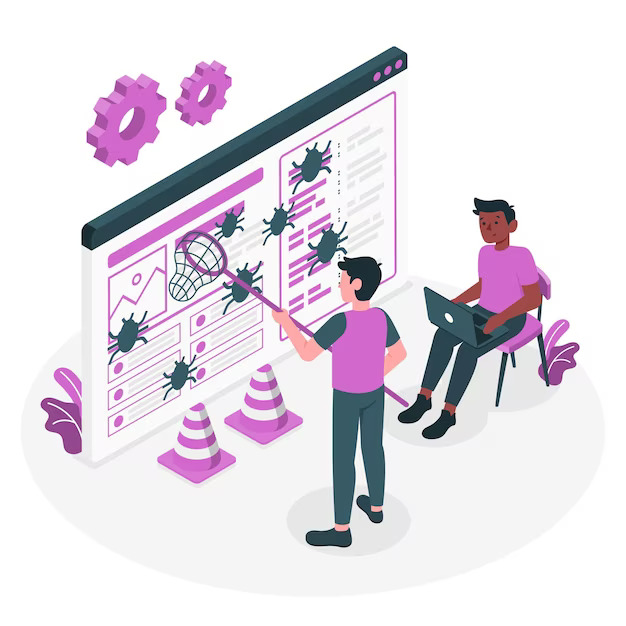
Testing is the unsung hero of mobile app development. Here’s why it deserves a top spot in your Flutter project:
1. Early Bug Detection:
Testing helps you catch bugs and issues early in the Mobile app development process when they are easier and cheaper to fix.
2. Flutter's Built-in Testing Framework:
Flutter offers a built-in testing framework that supports unit, widget, and integration testing. It’s an invaluable resource for thorough app testing.
3. External Testing Services:
Consider using external testing services like Firebase Test Lab or TestFlight for beta testing. They provide real-world testing scenarios with diverse devices and OS versions.
Prioritizing testing and debugging:
- Ensures app reliability and robustness.
- Boosts user satisfaction by minimizing crashes and glitches.
- It saves time and resources compared to fixing issues post-release.
Tip 7: Document Your Code Thoroughly
Comprehensive code documentation is a developer’s best friend. Here’s why you should make it a habit:
1. Enhanced Collaboration:
Good documentation helps team members understand your code quickly, fostering collaboration and knowledge sharing.
2. Onboarding New Developers:
When new team members join, well-documented code allows them to ramp up faster and become productive sooner.
3. Maintenance and Troubleshooting:
Documentation aids in identifying and fixing issues, making it easier to maintain and update your app over time.
Consider tools like DartDoc, which automatically generates documentation from your code comments. It simplifies the documentation process and keeps your documentation up to date.
Thorough code documentation:
- Reduces mobile app development bottlenecks caused by knowledge gaps.
- Supports long-term app sustainability.
- Enhances the overall quality of your Flutter project.
Tip 8: Stay Updated with Flutter's Releases
Keeping up with Flutter’s updates is a must-do for every Flutter developer. Here’s why it’s crucial:
1. Access to New Features:
Flutter’s mobile app development team consistently introduces new features, enhancements, and optimizations. Staying current ensures you have access to the latest tools and capabilities.
2. Bug Fixes and Security Updates:
Updates often include bug fixes and security patches. Stay updated protects your app and its users from potential vulnerabilities.
3. Performance Improvements:
Flutter’s updates frequently include enhancements, making your app faster and more efficient.
To stay informed:
- Regularly check Flutter’s release notes for details on what’s new.
- Engage with the Flutter community through forums, social media, and developer groups. Community discussions often provide valuable insights and best practices.
By staying up to date, you:
- Maintain a competitive edge with the latest app features.
- Ensure your app is secure and performs optimally.
- Align your Flutter project with industry best practices and standards.
Conclusion
In the dynamic world of Flutter app development, optimizing your process is key to success. To summarize, here are the main points we’ve covered in this blog:
Understanding Flutter's Advantages:
Flutter’s single codebase, expressive UI, and hot reload streamline development.
Clear Project Scope:
Define your project’s goals, features, and audience to prevent scope creep and save resources.
Leveraging Pre-Built Widgets:
Use Flutter’s extensive widget library for accelerated development and consistent UI.
Effective State Management:
Choose the right state management approach (e.g., Provider or Bloc) for responsive apps.
Optimizing UI/UX Design:
Good design boosts user engagement; Flutter offers tools and resources.
Embracing CI/CD:
CI/CD automation testing and deployment, enhancing development efficiency.
Prioritizing Testing and Debugging:
Thorough testing catches bugs early, improving app reliability.
Documenting Code:
Comprehensive code documentation enhances collaboration and long-term app maintenance.
Staying Updated:
Regularly update Flutter to access new features, bug fixes, and performance improvements.
Implementing these tips can significantly enhance your Flutter Mobile app development process, leading to more efficient development, higher-quality apps, and increased user satisfaction.
Let’s Start!
🚀 Fast-Track Your App:
We specialize in Flutter app development for startups, turning your ideas into reality quickly.
💰 Cost-Efficient:
Get high-quality apps without breaking the bank, thanks to Flutter’s efficiency.
🌟 Stunning Design:
Engage users with captivating UI/UX designs that drive success.
🌐 Cross-Platform Reach:
Conquer iOS and Android markets simultaneously with Flutter.
🛠️ Continuous Excellence:
Our support keeps your app current and performing at its best.
Partner with us to make your startup’s app journey a thriving reality. Contact us today!




